 by our College Data Analytics Team
by our College Data Analytics TeamBaker College total enrollment is approximately 6,028 students. 2,170 are undergraduates and 110 are graduate students.
Male/Female Breakdown of Undergraduates
The full-time Baker College undergraduate population is made up of 73% women, and 27% men.
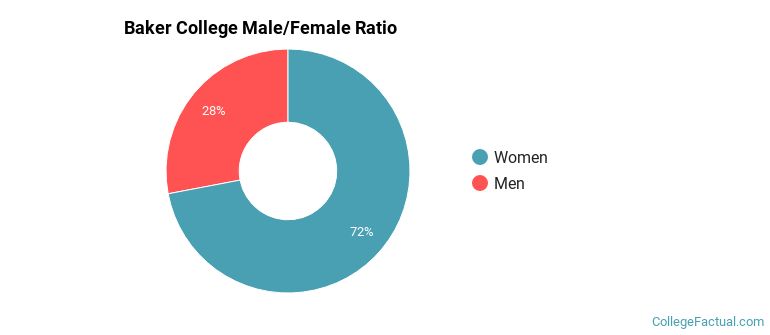
For the gender breakdown for all students, go here.
Baker College Racial/Ethnic Breakdown of Undergraduates
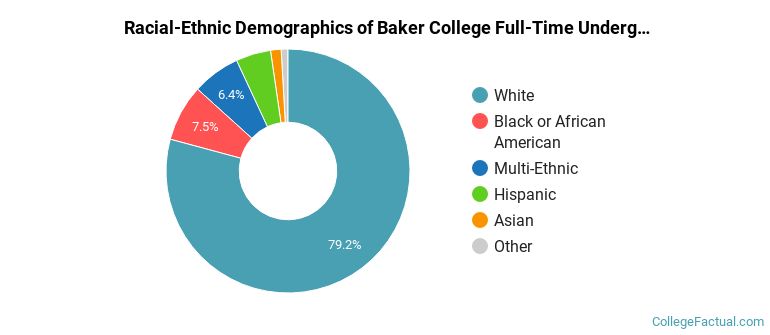
| Race/Ethnicity | Number |
|---|---|
| White | 1,709 |
| Multi-Ethnic | 169 |
| Black or African American | 131 |
| Hispanic | 101 |
| Asian | 40 |
| Unknown | 11 |
| Native Hawaiian or Pacific Islander | 3 |
| International | 0 |
See racial/ethnic breakdown for all students.
Male/Female Breakdown of Graduate Students
About 74% of full-time grad students are women, and 26% men.
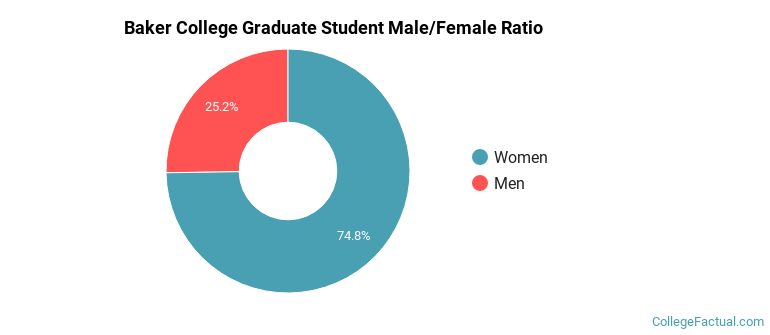
For the gender breakdown for all students, go here.
Baker College Racial-Ethnic Breakdown of Graduate Students

| Race/Ethnicity | Number |
|---|---|
| White | 82 |
| Multi-Ethnic | 11 |
| Black or African American | 8 |
| Asian | 5 |
| Hispanic | 4 |
| Native Hawaiian or Pacific Islander | 0 |
| International | 0 |
| Unknown | 0 |
See racial/ethnic breakdown for all students.
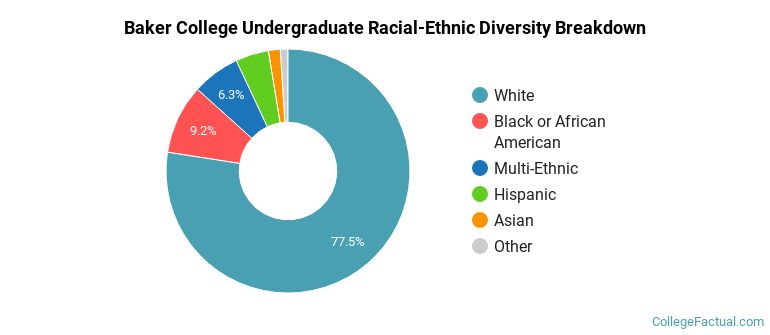
| Race/Ethnicity | Number |
|---|---|
| White | 4,588 |
| Black or African American | 537 |
| Multi-Ethnic | 470 |
| Hispanic | 286 |
| Asian | 85 |
| Unknown | 39 |
| Native Hawaiian or Pacific Islander | 5 |
| International | 0 |
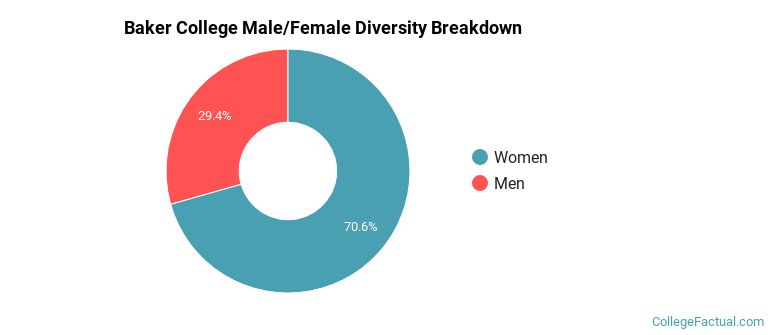
There are approximately 4,312 female students and 1,716 male students at Baker College.
Baker College ranks 1,428 out of 2,183 when it comes to geographic diversity.
4.96% of Baker College students come from out of state, and 0% come from out of the country.
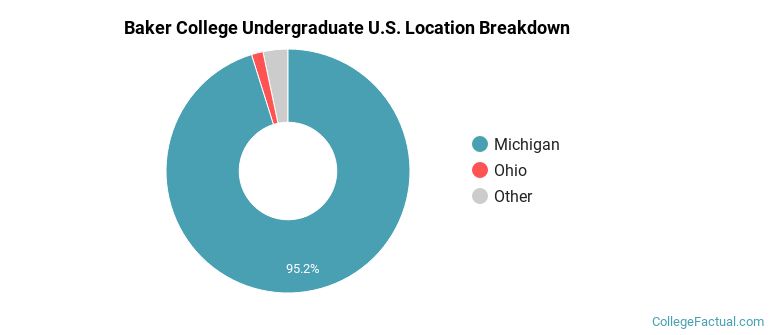
The undergraduate student body is split among 22 states (may include Washington D.C.). Click on the map for more detail.

| State | Amount |
|---|---|
| Michigan | 2,163 |
| Ohio | 35 |
| Illinois | 22 |
| Pennsylvania | 12 |
| Indiana | 10 |
A traditional college student is defined as being between the ages of 18-21. At Baker College, 24.35% of students fall into that category, compared to the national average of 60%.

| Student Age Group | Amount |
|---|---|
| 35 and over | 2,931 |
| 25-29 | 2,510 |
| 22-24 | 2,056 |
| 20-21 | 1,738 |
| 30-34 | 1,543 |
| 18-19 | 1,188 |
| Under 18 | 0 |
Footnotes
*The racial-ethnic minorities count is calculated by taking the total number of students and subtracting white students, international students, and students whose race/ethnicity was unknown. This number is then divided by the total number of students at the school to obtain the racial-ethnic minorities percentage.
References
Department of Homeland Security Citizenship and Immigration Services
Read College Factual's Diversity Ranking Methodology.